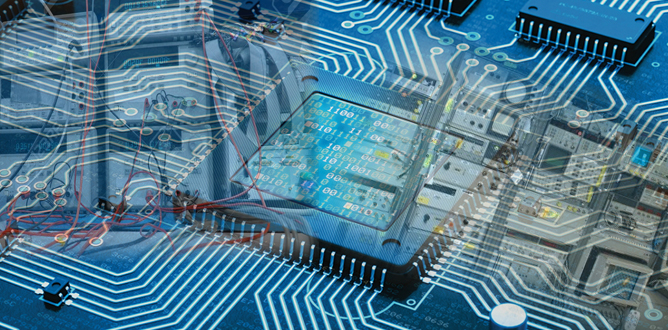System Integration

- Introduction
- Microprocessors and Integrated Circuits
- Interfacing devices
- Sensors
- Actuators
- ESS Implemented Application Areas
- Benefits of System Integration
Introduction
We at ESS are pioneers in Integrating systems. Our System Integration comprises of not only software, but a mixture of different streams namely mechanical, electronics, electrical and software. We can say this combination as Mechatronics.
Once the system integration is completed, it is understood that system picks up signals from the environment, processes them to generate output signals, transforming them into forces, motions and actions.
Microprocessors and Integrated Circuits
It is a general-rationale programmable logic device. It is a digital device which
collects data in digital form. This data is provided to stored programs to get processed as desired. A microprocessor is a semiconductor device having electronic logic circuits manufactured by using LSI (Large Scale Integration) or VLSI (Very Large-Scale Integration) technique. It is a chip capable of performing arithmetic and logic functions according to a defined program. A controller and computer designed using microprocessor is called a micro-computer and micro-controller, respectively.
Interfacing devices
Systems essentially consist of energy and information domains. Data
processing is done in digital devices while physical detection in sensors and power
output in actuator requires analog capability. Hence appropriate devices for Digital
to analog and vice-versa are necessary.
Sensors
It is a sensing device that converts physical phenomena and chemical composition
into electric, pneumatic, or hydraulic output signals.
Actuators
It is a sensing device that converts physical phenomena and chemical composition
into electric, pneumatic, or hydraulic output signals.
The actuator does the task of transforming control signal into action on the control element. The actuator supplies large force or torque to manipulate some control element such as valve, switch etc. Generally conventional actuators use electric motors and fluid power as their energy source. We at ESS prefer to use modern actuators for mechatronic applications use novel technology such as ultrasonic motors, micromotors, piezoelectric and magneto strictive forces and shape memory alloys to derive necessary energy. Some of the common types of devices are listed in figure 2.
ESS Implemented Application Areas
- Servo-mechanics
- Sensing and control systems
- Industrial manufacturing
- Energy and power systems
- Engineering and manufacturing systems
Benefits of System Integration
- Enhanced features and functionality
- More user-friendly
- Precision control
- More efficient
- Lower cost
- Flexible design (reprogrammable)
- More reliable
- Smaller
- Safer
Systems Integration plays a vital role in different applications of mechanical engineering.
In many applications, purely mechanical solutions are not as efficient, nor as precise as mechatronic solutions. It is concerned with generating motions in machinery in a controlled way.

